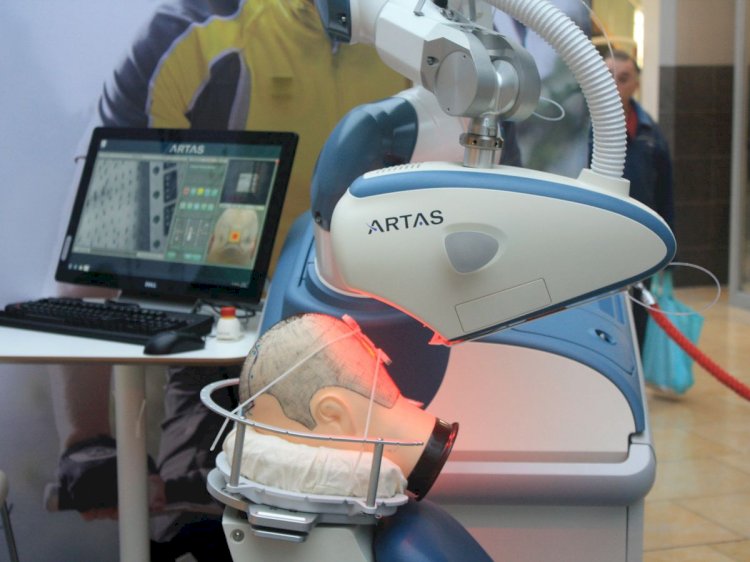Helping Ease The Process Of Hair Transplant, Here Is Robot Hair-Transplant Device Getting FDA Nod
For hair transplant, robotic device speeds harvest of scalp follicles. What is the technology behind the Artas system? Here is the good news you wanted to know.

FDA Approves A Robotic Device
Having a green light from the FDA is a robotic device for harvesting hair follicles now.
It's approved only for people with black or brown straight hair and so sorry blondie and curly. In the studies that led the FDA to give its 510(k) premarket notification which allows the sale of a device, blond and curly-haired people were not included.
Removing hair follicles from hairy parts of the head or body for later transplant to the bald scalp, the device speeds the process of harvesting. An alternative to an older technique in which a strip of hair is removed and separated into smaller units for transplant, it can be used in a procedure called follicular unit extraction or FUE.
Needed for a natural-looking hair transplant, one problem with FUE is that it takes several hours and sometimes multiple sessions for a doctor to thereby punch out the thousand or so as the tiny two to six of the hair follicle units. It's very hard to tell exactly where the follicle lives is another problem. Resulting in slicing up a healthy follicle what doctors call transection, and losing it forever is guessing wrong.
Many hair restoration doctors prefer the older strip technique for these reasons and because some people simply aren’t good candidates for FUE. This is noticeable if a person wears his or her hair short, the strip leaves a scar across the back of the head. For the patient, the strip technique means a longer recovery time.
Saying it has a better way to perform FUE is Restoration Robotics Inc about the Artas System.
Special imaging technologies for guiding follicle-unit removal, small dermal punches, and a computer interface the Artas System has an image-guided robotic arm. For slight patient motions too it corrects.
On both the patient and the doctor, the robot is expected to make FUE faster and easier. The robot is expected to make FUE easier to learn because manual FUE is a very difficult technique to master. From being able to do more FUE procedures with fewer assistants, Restoration Robotics says the cost of the device should be offset by the savings a doctor will realise.
Miguel Canales, MD, medical director for Restoration Robotics, says that they were demonstrating in the FDA trials, the Artas System’s ability to meet equivalency in hair follicular survival, those transection rates as well as safety to current manual FUE techniques.
Artas is surely the promise of the future. With robotic help, the accuracy of the follicular implants can be increased. The precision of the technology helps find the best results for the traditional FUE transplants.
Doctors can be assisted efficiently during the process. This makes the overall effect quite a success. As the future may be bright for people with a receding hairline, it is sure to make the process even easier with the research that is going on.
What should you expect after a hair transplant?
The scalp may come to be very tender just after the surgery. For several days you may need to take pain meds. Prescribing an antibiotic or an anti-inflammatory drug for you to take for several days, your surgeon will have you wear bandages over your scalp for at least a day or two. After the operation, most people can return to work after two to five days. The transplanted hair will fall out but you should start to see new growth within a few months within two to three weeks after surgery. To improve hair growth after transplantation some surgeons prescribe the drug minoxidil whereas how well it works is not clear.
Then What Should Be The Aftercare For A Transplant?
For most a receding hairline is surely a cause to be worried about. It affects their mental stability, social life, and overall health of the body.
Too much worry can result in stress resulting in many of the conditions that the body has to eventually face. It also takes a toll on happiness and the mind to feel relaxed. The anxiety results in quite a few diseases similar to the ones suffered by people with other skin disorders. Hair and skin speak volumes about your health. So be aware of the result that keeps the people secluded in their homes.
Expert advice and self-help groups can help your life after a transplant. It is soothing to the mind to know people are facing similar conditions. You need not thereby be alone in your fight against balding.
What's Your Reaction?





















